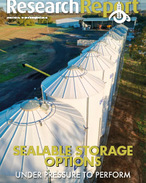This article is 2 years old. Images might not display.
The Insights report says Australian lamb prices will take direction from a resumption of normal supply trends in May following a disrupted April which included public holidays from Easter and ANZAC day.
This led to the week ending 21April being the highest weekly lamb slaughter since December 2019.
Meanwhile, the rest of the month saw weekly slaughter well below previous months. Lamb supply is expected to lift in May with plenty of lambs still to be sold, according to Rural Bank.
This should also help sustain weekly supply into winter rather than the typical decline in supply seen during June and July.
As a result of a more extended period of high supply, lamb prices are not expected to see their usual 10 per cent increase from April to July as supply tapers off.
Rural Bank says this will keep prices languishing below five-year average levels for the time being.
The end of April saw the National Trade Lamb Indicator (NTLI) drop below 700c/kg. This followed a short-lived improvement back to 733c/kg in early April. Currently, the NTLI is 14.9 per cent below its five-year average.
Turning to lamb exports and volumes have continued to outpace 2022 levels despite supply disruptions causing fewer exports in April.
Exports during January to April were five per cent higher than 2022 and the largest volume since 2020.
Rebounding demand from China and the UAE has driven this growth while South Korea has further cemented itself as an important market. These improvements have helped offset a 22.6 per cent decline in year-to-date exports to the United States where economic conditions are seeing consumers trade down to cheaper proteins.
A lack of upside for lamb prices is also likely to prevent any further improvement in mutton prices following a strong recovery in recent weeks. The National Mutton Indicator (NMI) has rebounded by 49 per cent since mid-March.
Having briefly dropped below 300c/kg, the NMI has since recovered to 442c/kg.
Rural Bank believes further growth in mutton prices is unlikely until supply declines from current high levels.























